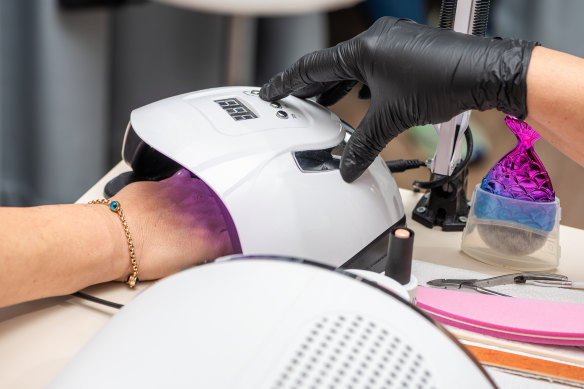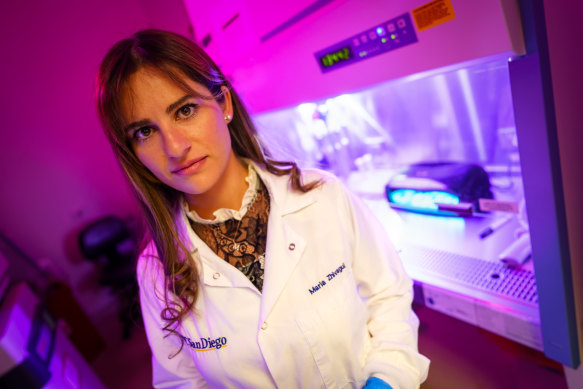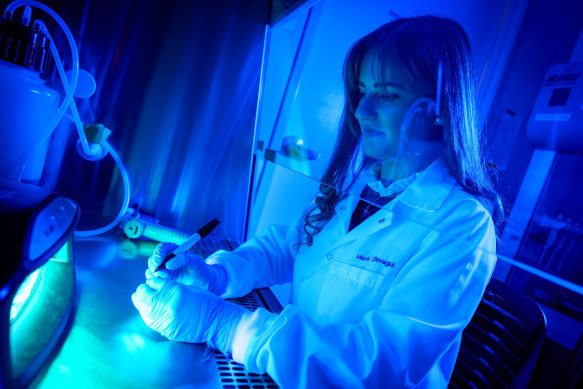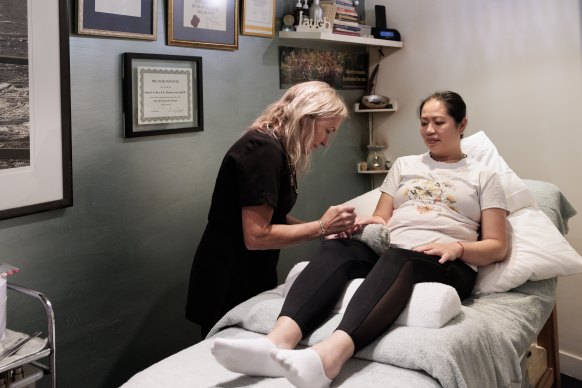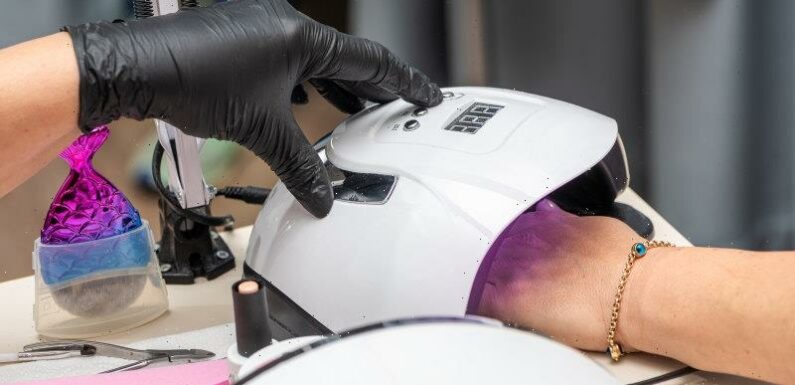
Key points
- An American study revealed moderate damage to human and mouse cells after long sessions of UV light from a nail lamp.
- Ultraviolet nail lamps are used in salons and at home to cure and dry gel nail polish.
- The study found modest levels of oxidative stress in the cells, a mechanism that can damage DNA.
- Independent scientists were much more cautious about interpreting the results.
- The Australian Radiation Protection and Nuclear Safety Agency tested at-home nail dryers, finding the most powerful devices would need to be used for almost 40 minutes before posing a risk.
A new study shows devices used for drying nail polish at salons and at home could cause DNA damage, a possible precursor to cancer, but Australian experts say more needs to be known about the cumulative effects of using the machines.
The American study revealed moderate damage to human and mouse cells after long sessions of UV light from a nail lamp.
Australia’s radiation safety regulator said the devices posed a low risk if only used for a short time. However, it conceded the effects of long-term, repeated exposure were unknown.
“To be honest, the results are not surprising,” said Professor Richard Scolyer, co-medical director of Australia’s Melanoma Institute. “We know these devices emit UVA. And UVA can cause DNA damage. We just don’t know how it translates to humans.”
Ultraviolet nail lamps are used in salons and at home to cure and dry gel nail polish. The UV light hardens the gel.
Two types of UV radiation, known as UVA and UVB, are known to contribute to skin cancer – with UVB considered by far the bigger threat.
Ultraviolet nail lamps generally emit only UVA radiation, similar to tanning beds – although the beds do emit some UVB as well.
In recent decades, science has turned up strong evidence linking tanning bed use to skin cancer, particularly among young people.
The evidence led to a widespread ban of solariums in 2015.
After flicking through gossip magazines in a dentist’s waiting room, postdoc researcher Maria Zhivagui from Moores Cancer Center in California was drawn to study the devices after her co-author, Associate Professor Ludmil Alexandrov, read about a beauty pageant contestant who had contracted cancer of the finger.
Nail dryers emit UVA light – a potential risk factor for skin cancer.Credit:iStock
They soon discovered more cases: a woman with cancer on her hands after 18 years of regular use; another with cancer after 15 years of twice-monthly use.
The pair exposed human and mouse cells to light from a nail lamp in two 20-minute sessions on the same day, or three 20-minute sessions on three days to simulate regular use. They then checked the cells for signs of damage.
Their study, published in the journal Nature Communications last week, showed modest levels of oxidative stress in the cells, a mechanism that can damage DNA and in the long term, potentially cause cancer.
“Experimental results and the prior evidence strongly suggest that radiation emitted by UV nail polish dryers, similar to tanning beds, may increase the risk of early onset skin cancer, especially in people at higher risk to cancer,” Zhivagui told The Age and Sydney Morning Herald.
Maria Zhivagui, a postdoctoral scholar in the Alexandrov Lab, is first author of the study.Credit:UC San Diego via Flickr
Independent scientists were much more cautious about interpreting the results.
UVA is known to pose a cancer risk. But nail dryers have been widely used for some time and, despite that, cancer of the finger remains extremely rare, said Professor David Whiteman, a cancer epidemiologist based at Queensland’s QIMR Berghofer medical research institute.
“If I went out now in the sun without sunblock and then took a skin biopsy, in five minutes I’d have a lot more damage than those cells did,” he said.
In 2021, the Australian Radiation Protection and Nuclear Safety Agency (ARPANSA) conducted tests of eight at-home UV nail dryers. Even the most powerful device tested would need to be used for almost 40 minutes before it started posing a risk, the agency found. Most nail dryers are only used for a few minutes at a time.
Maria Zhivagui carries out tests in the lab.Credit:UC San Diego via Flickr
However, skin damage from UV light is known to be cumulative – the more you are exposed, the greater your risk.
Associate Professor Ken Karipidis, the agency’s spokesman, admitted “the physiological impact of the accumulated UVA exposure to the hands remains unknown”.
“For that reason, the ARPANSA recommendations are advised such as opting to use fingerless gloves and/or sunscreen, and the provision of safety information for consumers about the possible risks.”
The risk may be low, but it’s also easily avoided. Sage Beauty, in the Sydney suburb of Bondi, does not use the dryers at all.
Junia Kerr applies nail varnish at her salon Sage Beauty in Bondi. The salon does not use traditional UV dryers. Credit:Brook Mitchell
“We don’t use anything. You just wait,” says owner Junia Kerr. The polish eventually dries on its own.
“We know UVA can cause skin cancer. We know this. We know women get their nails done regularly,” she says. “Why use it? I don’t think it’s necessary.”
Professor Anne Cust, chair of the Cancer Council’s skin cancer committee, said large studies in humans were needed to confirm an association with skin cancer risk.
Liam Mannix’s Examine newsletter explains and analyses science with a rigorous focus on the evidence. Sign up to get it each week.
Most Viewed in National
From our partners
Source: Read Full Article
